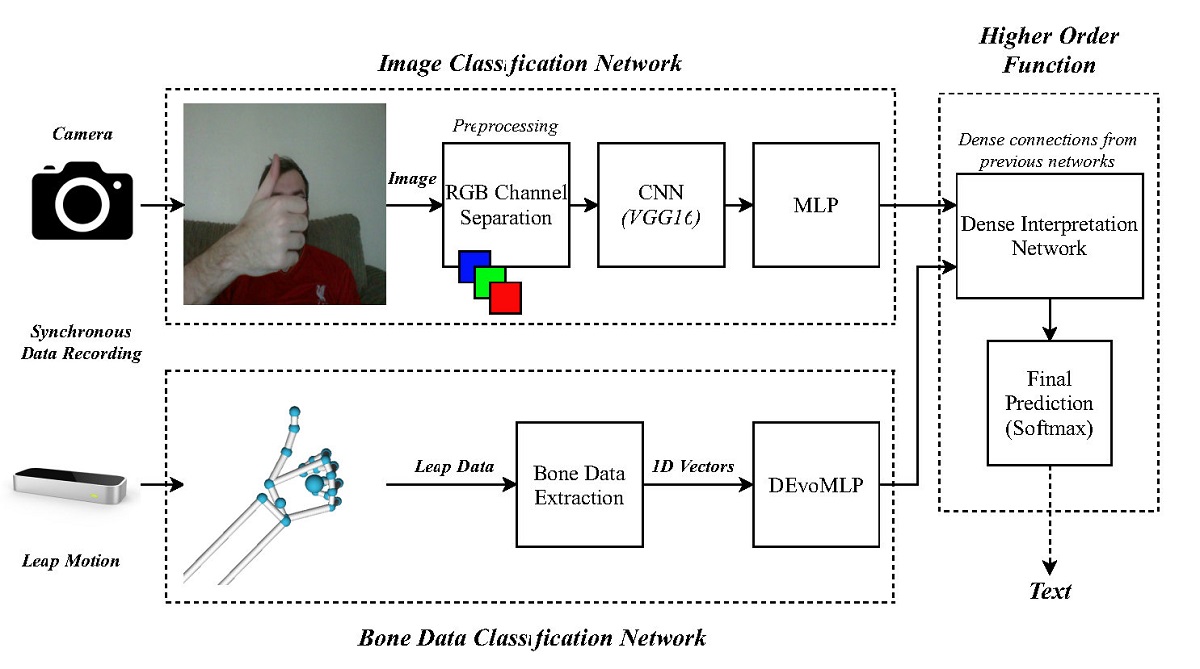In this work, we show that a late fusion approach to multi-modality in sign language recognition improves the overall ability of the model in comparison to the singular approaches of Computer Vision (88.14%) and Leap Motion data classification (72.73%). With a large synchronous dataset of 18 BSL gestures collected from multiple subjects, two deep neural networks are benchmarked and compared to derive a best topology for each. The Vision model is implemented by a CNN and optimised MLP and the Leap Motion model is implemented by an evolutionary optimised deep MLP topology search. Next, the two best networks are fused for synchronised processing which results in a better overall result (94.44%) since complementary features are learnt in addition to the original task. The hypothesis is further supported by application of the three models to a set of completely unseen data where a multi-modality approach achieves the best results relative to the single sensor method. When transfer learning with the weights trained via BSL, all three models outperform standard random weight distribution when classifying ASL, and the best model overall for ASL classification was the transfer learning multi-modality approach which scored 82.55% accuracy.

